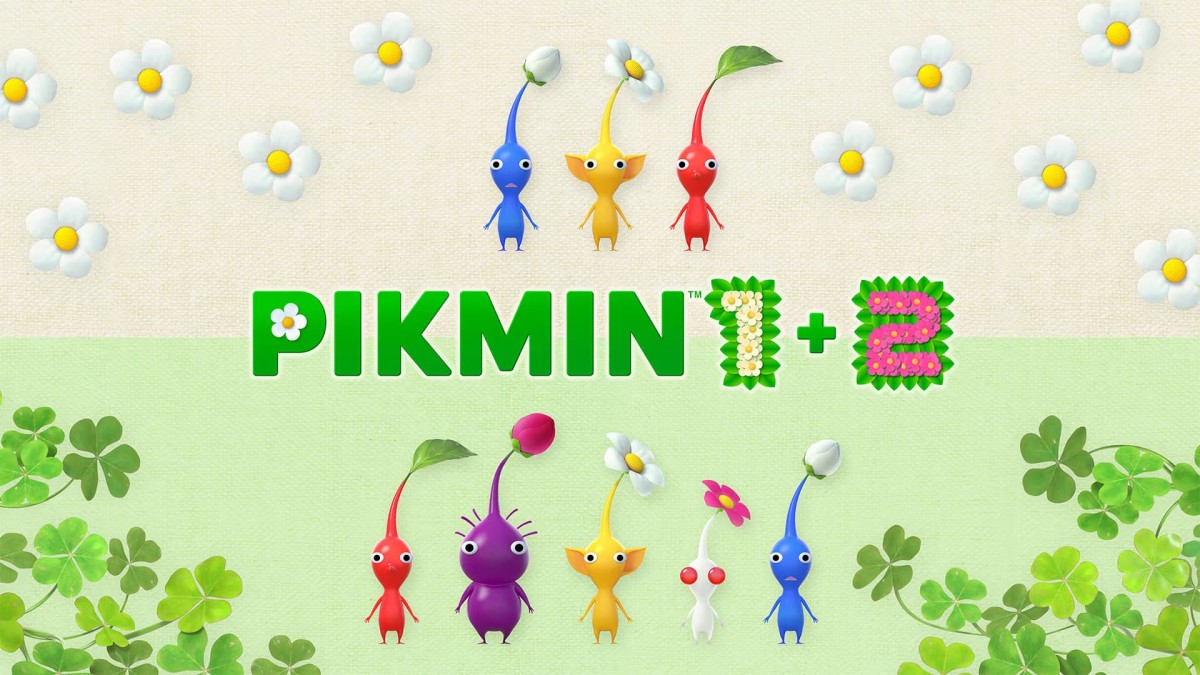Pikmin 3 Deluxe was a culmination of the best aspects of what made the series great up to that point. It had just the right amount of pressure to keep the gameplay tense but also gave enough breathing room for gamers to take it a little easy while exploring PNF-404.
One would think this means Pikmin 3 Deluxe would make the previous two entries obsolete or not worth playing. You would be very and extremely wrong to assume so. The first two Pikmin games have bespoke qualities that still make them worthwhile to play and offer unique experiences that the third entry does not offer.
With the fourth Pikmin coming out in July 2023, Nintendo sought to get all gamers up to speed with an HD collection of the first two Gamecube titles. How does the HD conversion fare for these sixth gen classics? Does the gameplay hold up after all these years? Find out in this Pikmin 1+2 review!
Pikmin 1+2
Developer: Nintendo
Publisher: Nintendo
Platforms: Nintendo Gamecube, Nintendo Wii (as part of the New Playcontrol! series), Nintendo Wii U (via backward compatibility and eShop download), Nintendo Switch
Release Date: June 21, 2023
Players: 1
Price: $49.99 USD

Pikmin 1+2 has two games that follow a formula where diminutive space gnome Olimar gets stuck on PNF-404 (which may or may not be Earth) and the majority of the narrative revolves around collecting stuff. In the case of Pikmin 1, Olimar has 30 days to get all 30 ship parts to get home and the sequel has him and Louie search for junk to sell to clear their employer’s debt.
The plot is a blatant excuse to get the player in the shoes of a little space man exploring an oversized world where they must get mindless gremlins to do labor or die in battle. It is almost comical how the narratives in these games acknowledge the absurdity of the coincidences of the circumstances. Hocotate Freight is seemingly blasé about the events and roll with the bleakness of the situation.
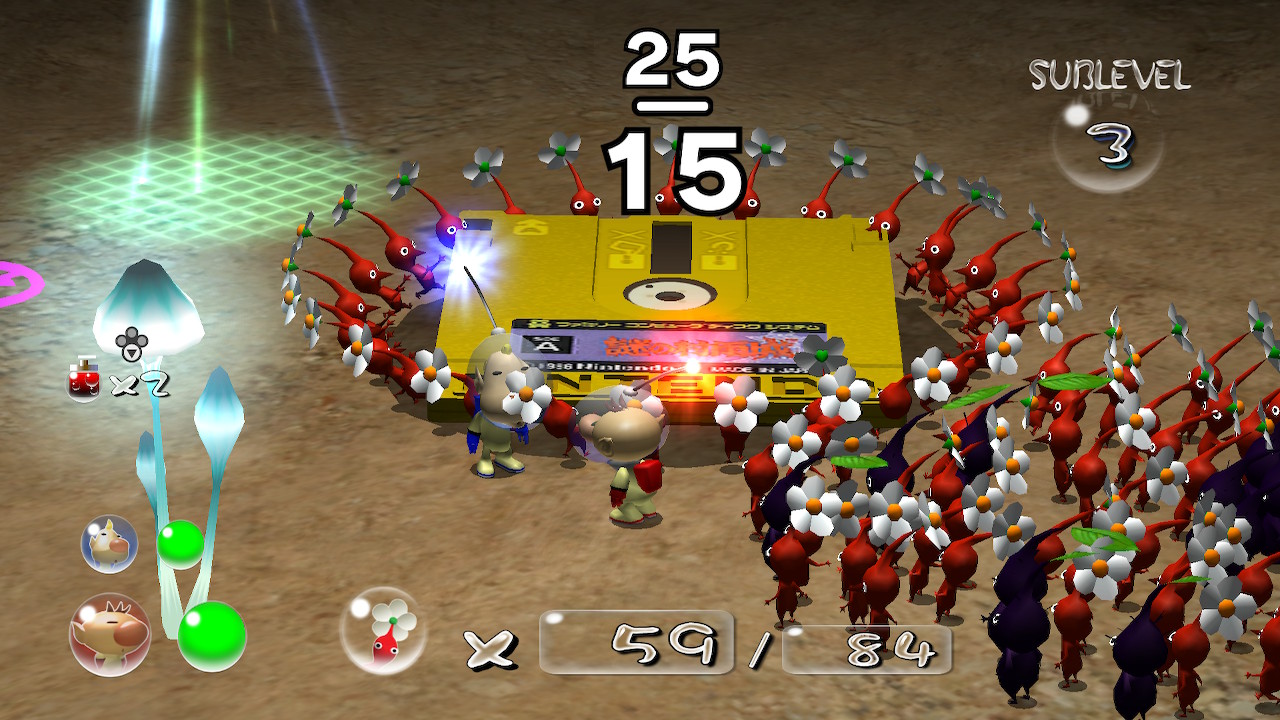
Pikmin 1+2 has more than deadpan humor; it also manages to explore a very real and dark side of nature. It is a jungle out there and these games have always made a point that no matter how badly humanity treats the environment, it is nothing compared to the devastation that mother nature can cause.
The dog-eat-dog, untamed wilds of PNF-404 are festooned with Bulbears, Wollywogs, and vicious Sangrets. These silly named creatures are like if Jim Henson were to dupe children into another one of his darker creations with goofy-looking puppets, only to have them savagely eat cute mascots.
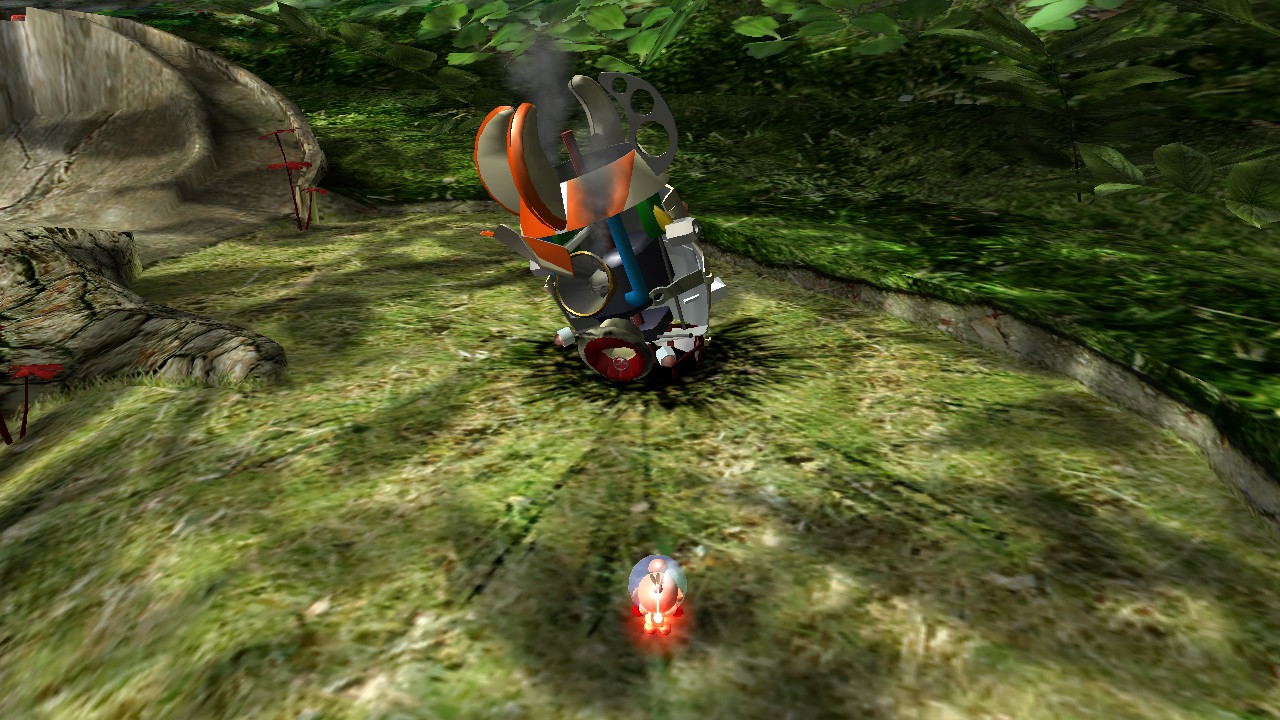
Pikmin 1+2 may depict the cruel and unrelentingly savageness of mother nature, but it still manages to have a cute sense of humor and heart. This franchise is a shining example of Nintendo’s panache at mixing emotions. The contrasting tension and the melancholic, yet nostalgic outdoor setting are comforting despite a terrible Bulbax lurking around the corner.
These are games where the atmosphere hones in how the player’s emotions. Being in a dark cave and being illuminated by lit flames while surrounded by a hundred Pikmin, the sounds of dripping can be heard in the distance.
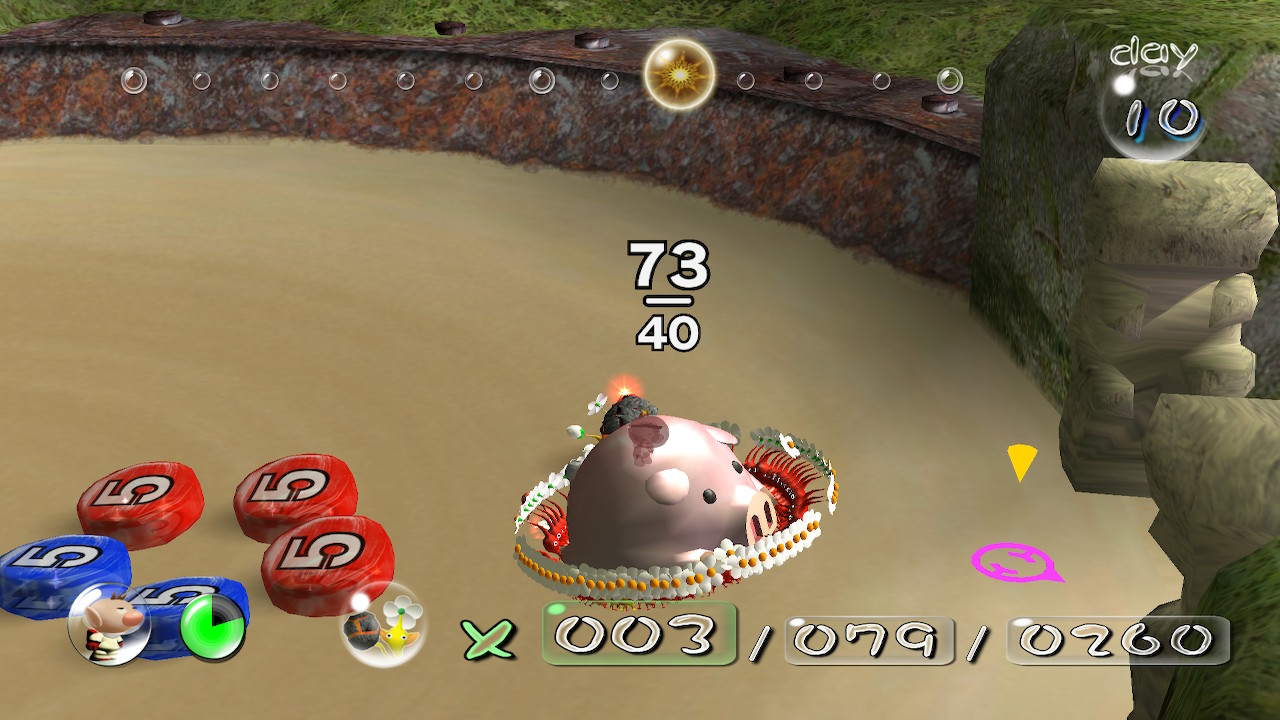
Pikmin 1+2‘s gameplay is mostly the same as it has always been. Olimar will rely on Pikmin to crumble barriers, fend off hungry threats, build bridges, and move structures to further explore what might be a backyard garden.
The main differences are the first game being very tense and demanding gamers to manage their time and Pikmin wisely. After 30 days, if Olimar doesn’t have his ship repaired, he will become a permanent PNF-404 resident and will never see his family.
What makes Pikmin 2 unique is that it drops the time pressure element and introduces some dungeon-crawling gameplay modules. Olimar won’t be alone in the sequel; he is accompanied by Louie. This allows players to split up into two teams for more efficient exploration.
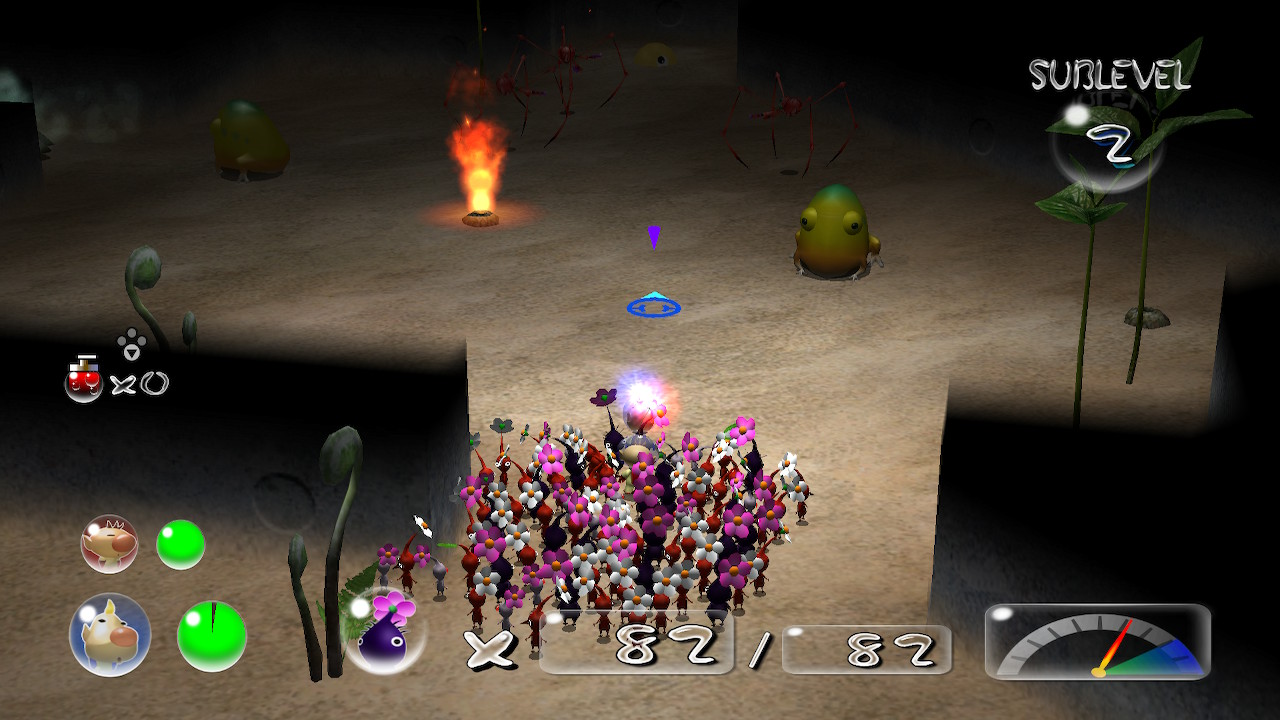
Pikmin 2 is a much longer experience than the first game and a lot of it can feel like it has been padded out due to how the caves are randomized. There are more enemies, more Pikmin types, and a lot of collectibles to pawn off to pay Hocotate Freight’s debt. While it lacks careful design, this sequel is still enjoyable thanks to the rock-solid foundation from the first game.
Pikmin 1+2‘s core mechanics can be best described as an “actionized real-time strategy game”. No matter which Pikmin the team assembles, there is a limit of 100 on the field. This restriction demands thoughtful planning on which Pikmin type will be a priority and things to consider like how many of which type is available. Chances are that some will die, but no matter what, there are ways to get more.
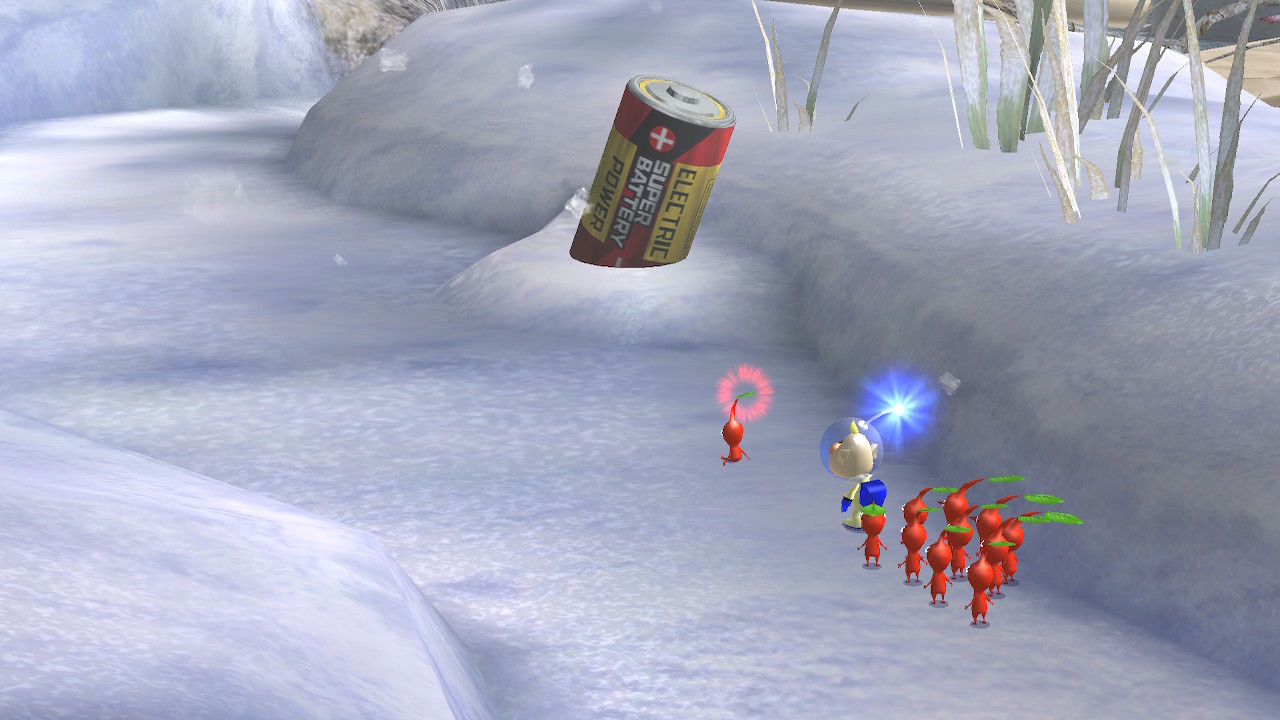
Engaging with dangerous animals becomes necessary to build a bigger army since Pikmin has no sense of self-preservation. Like a swarm of ants, Pikmin carries dead animals back to their hive to process them. The dead become sprouts to be plucked by Olimar or Louie, which are immediately full-grown Pikmin.
This circle of life and death is a critical pillar of Pikmin 1+2‘s cycle of survival. Sometimes you must sacrifice a few lives to potentially gain more. The action is stimulating, requiring flanking and keeping an eye open for enemy tells and patterns. Every enemy design communicates exactly what kind of strategy is needed.
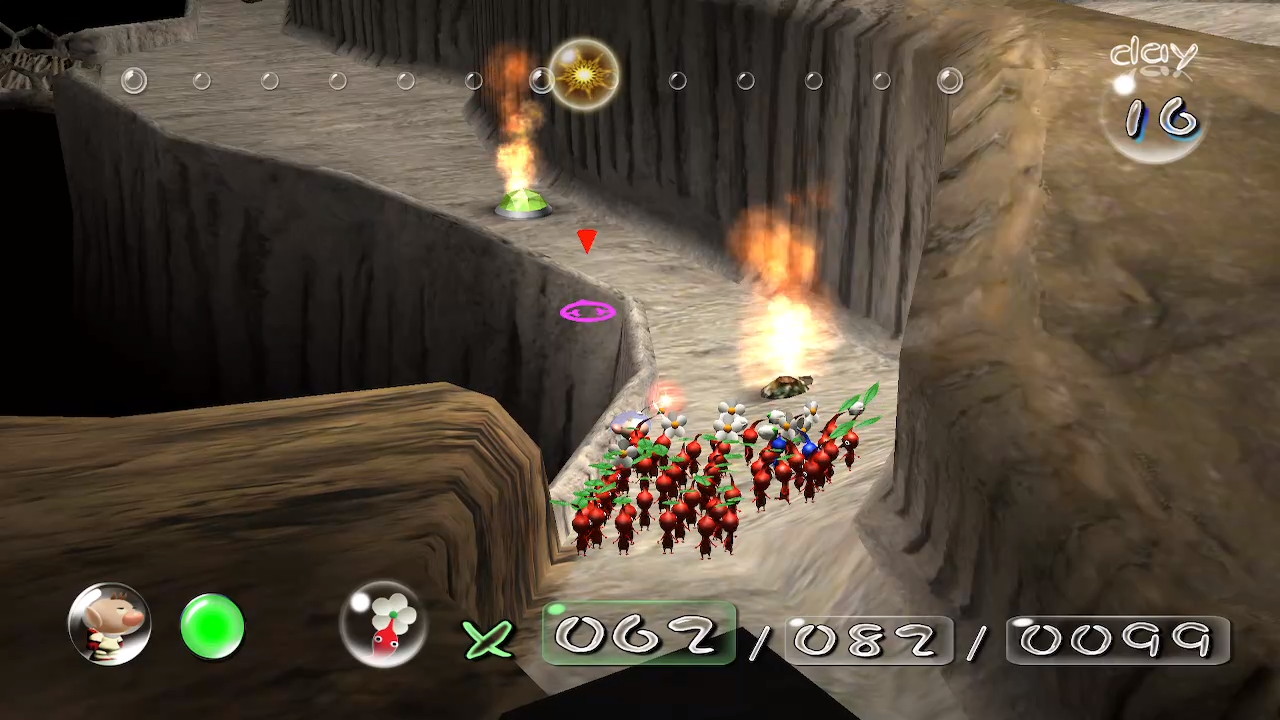
Battles will often have players quickly call back Pikmin into formation, like a kindergarten teacher summoning the children. The little devils scurry back to Olimar or Louie, and it is hard to not find them adorable thanks to their childlike innocence.
Pikmin 1 has been made noticeably snappier when Olimar/Louie blows the formation whistle. It used to be slower, but this version has made it almost instant.
Some Pikmin may fall off a target and will try to get back up. Other times, some may become a victim. These little guys function like recyclable ammo, so ensuring as few casualties as possible is crucial to surviving a battle.
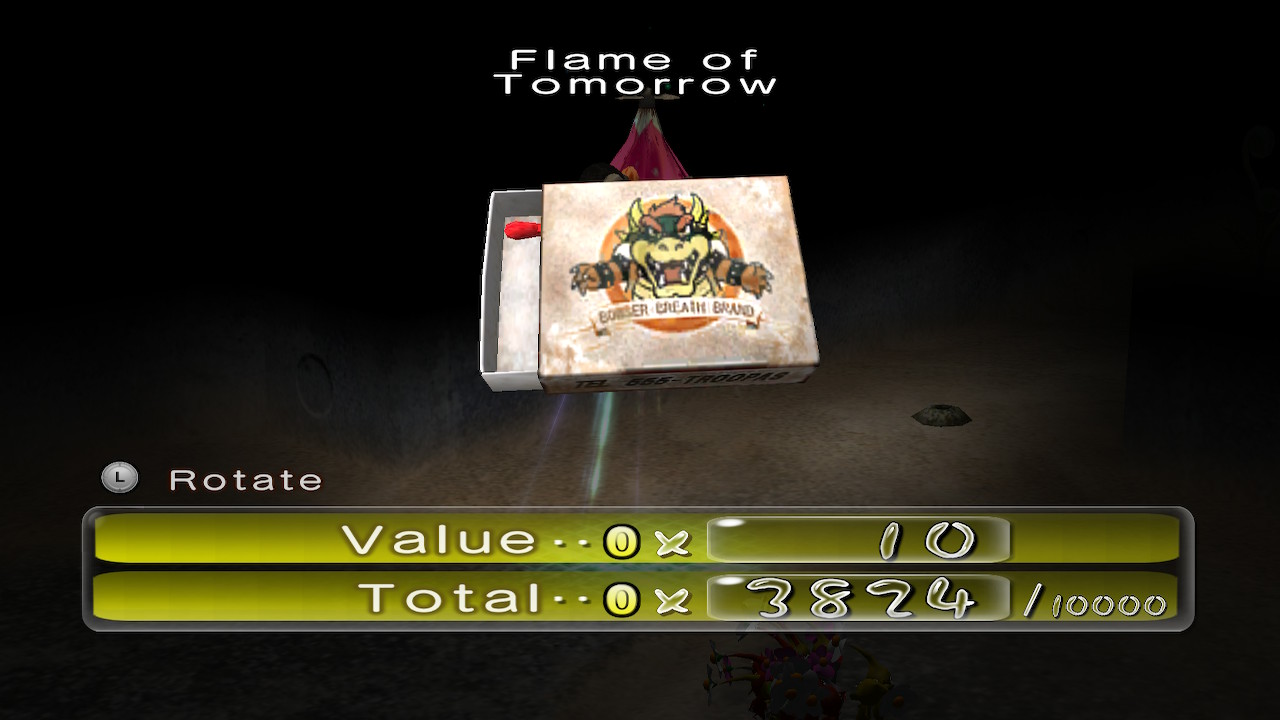
Not much was done to the graphics of either game in Pikmin 1+2. Not much needed to be done since both titles managed to achieve a stylized and classic look, but it is hard to not wonder what could have been if the same effort was given as seen in Metroid Prime Remastered. Sadly, Pikmin 1+2 is a very conservative port on Nintendo Switch and is a lot closer to something like Super Mario 3D All-Stars.
The resolution has seen a significant increase to 1080p while docked and the aspect ratio is 16:9 from 4:3. While the textures and models are the same fuzzy low-rez assets, the text and UI elements are all rerendered in razor-sharp clarity. The few prerendered cutscenes look crisp and hold up well. Looking closely, they might have been AI-upscaled, but the effect is marvelous.

By far the biggest disappointment in this collection is both games are running 30 frames per second. These could easily run at 60fps on Nintendo Switch’s meager specs, but Pikmin 1+2 is destined to be consistent with the rest of the series. One would assume that the modest graphics budget would make a higher frame rate tenable.
Pikmin 1+2 is close to being the definitive way to experience these games before playing the second and third sequels. The low-effort porting of these games is a letdown, but the core games are wonderful and are faithfully converted to run on a reliable and widely available console.
Pikmin 1+2 was reviewed on Nintendo Switch using a code provided by Nintendo. Additional information about Niche Gamer’s review/ethics policy can be found here. Pikmin 1+2 is now available for Nintendo Switch.
